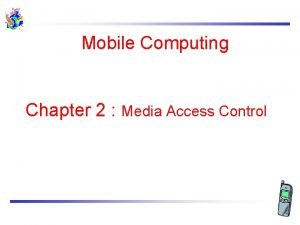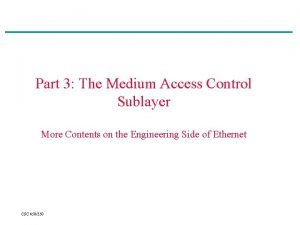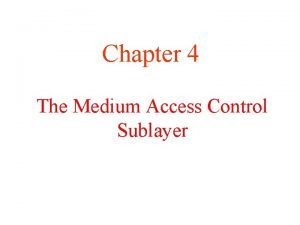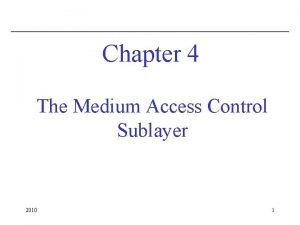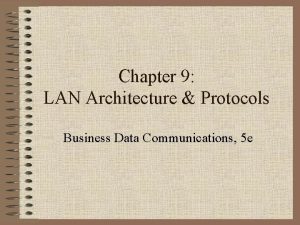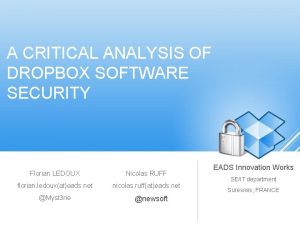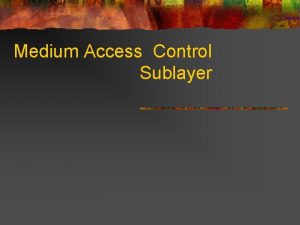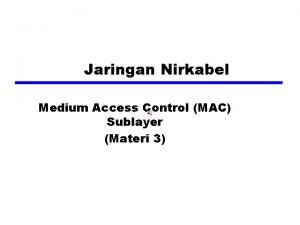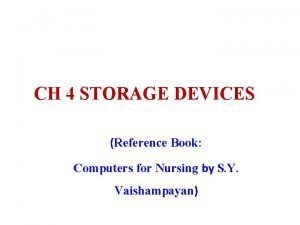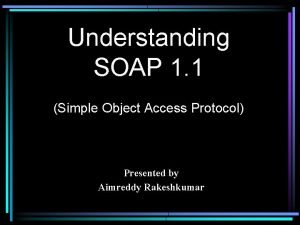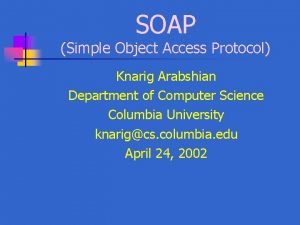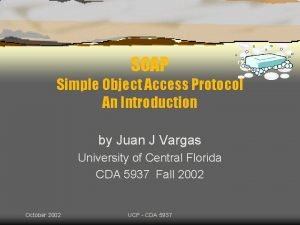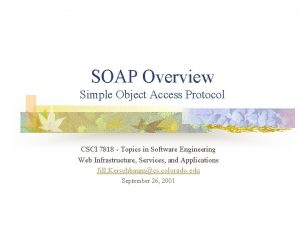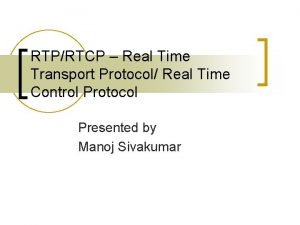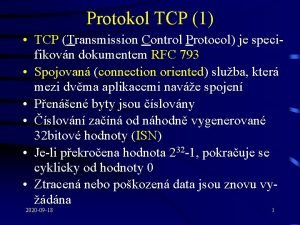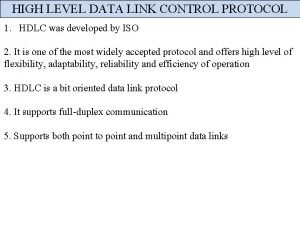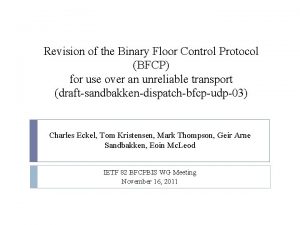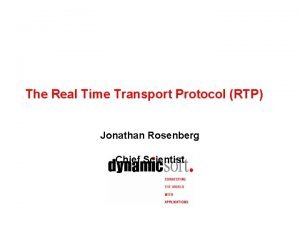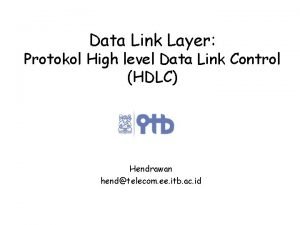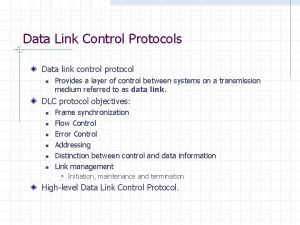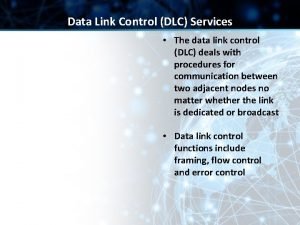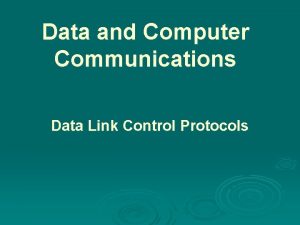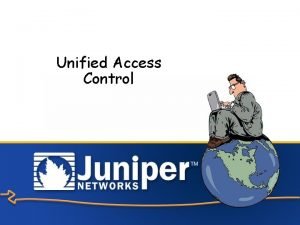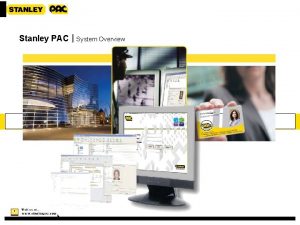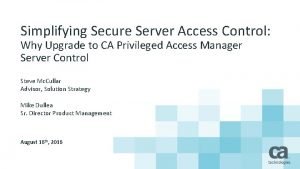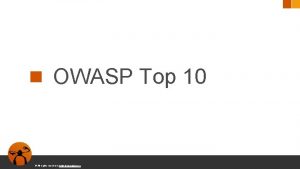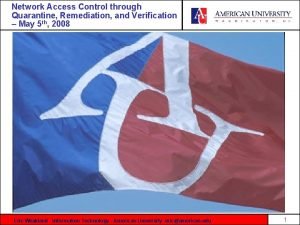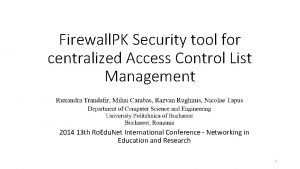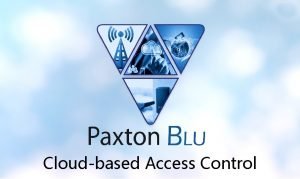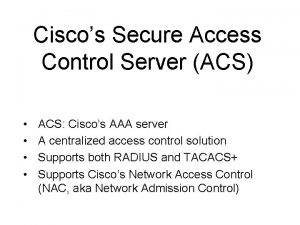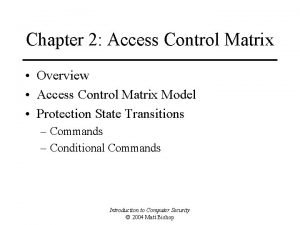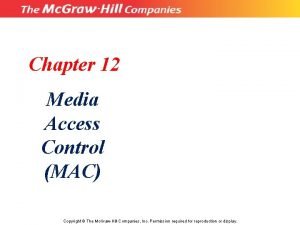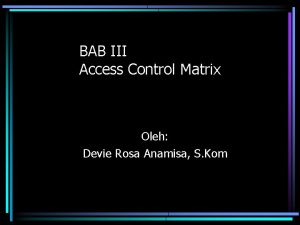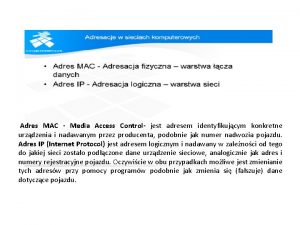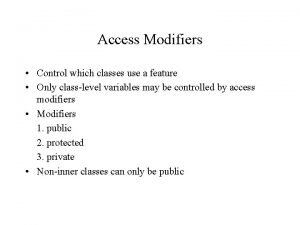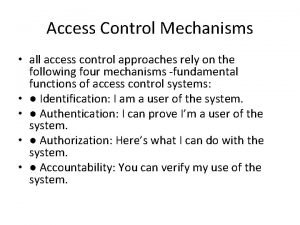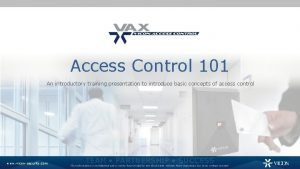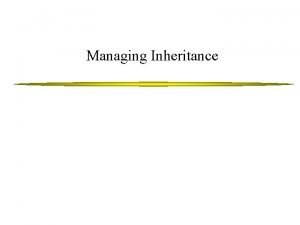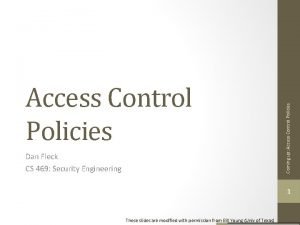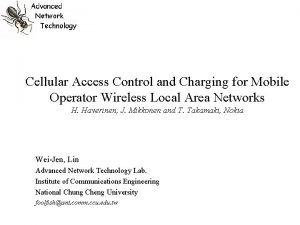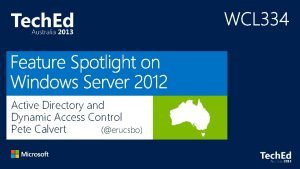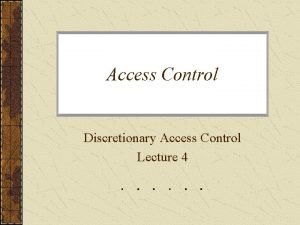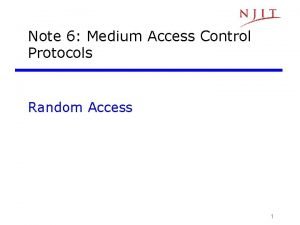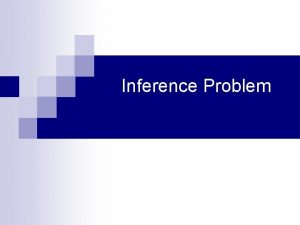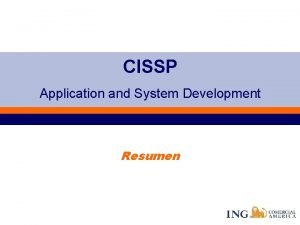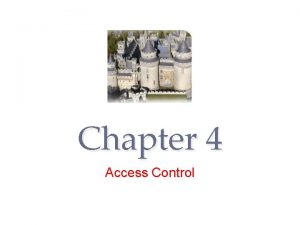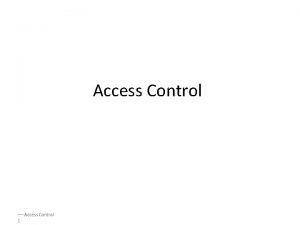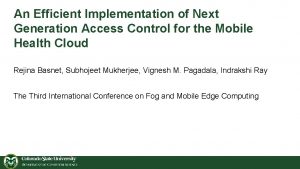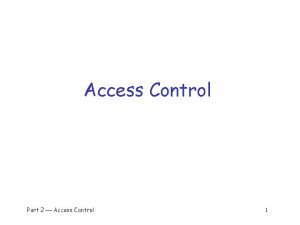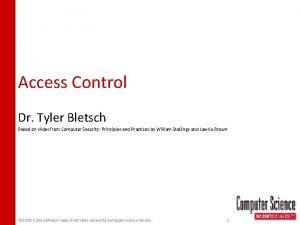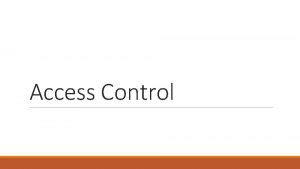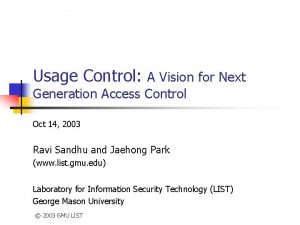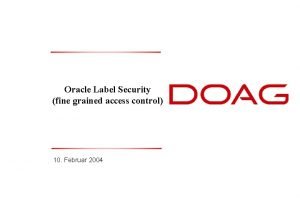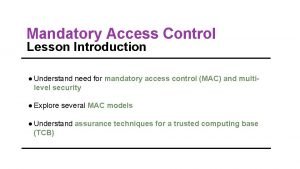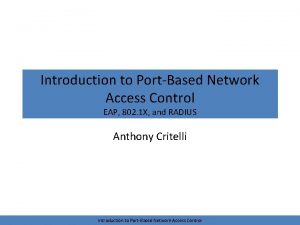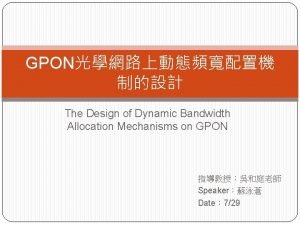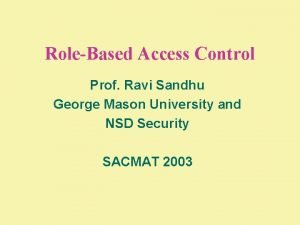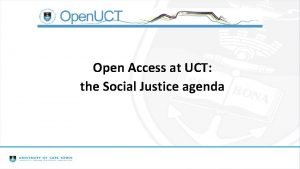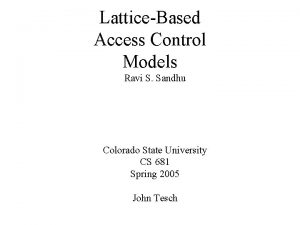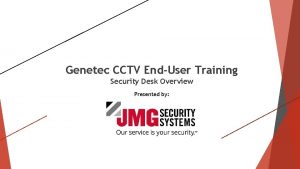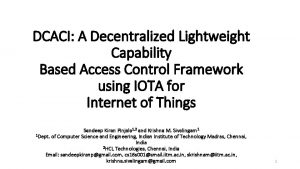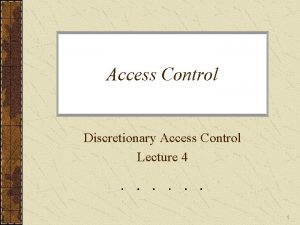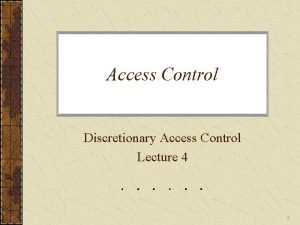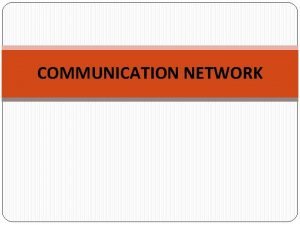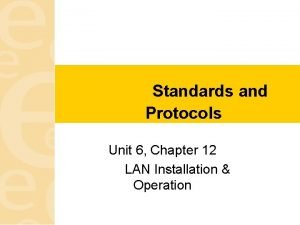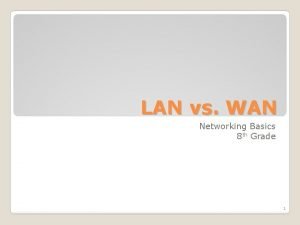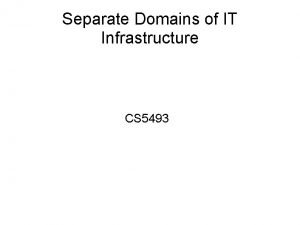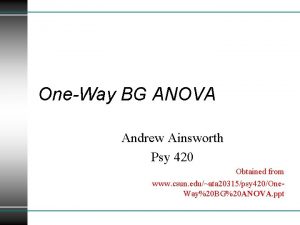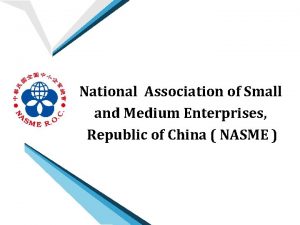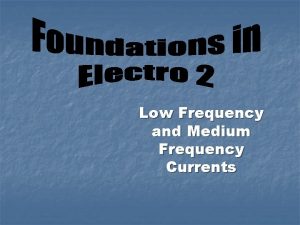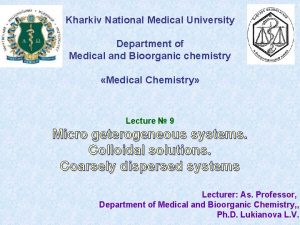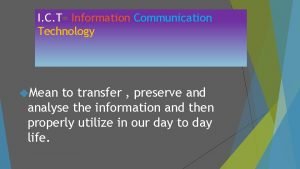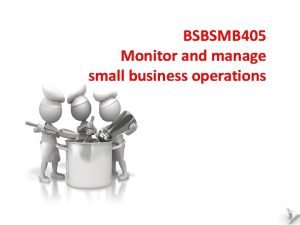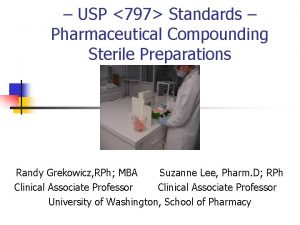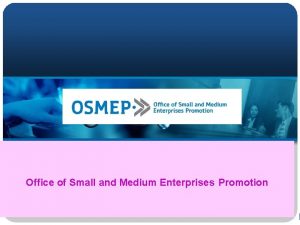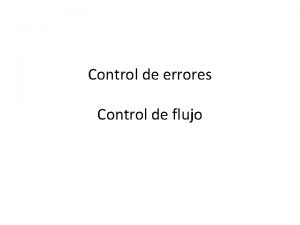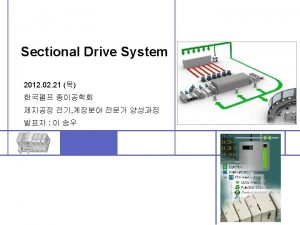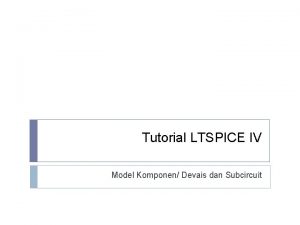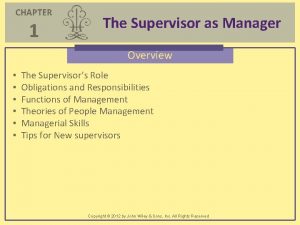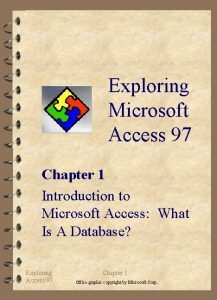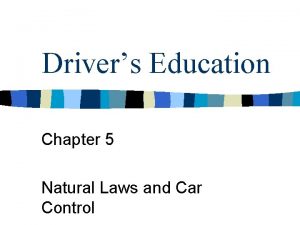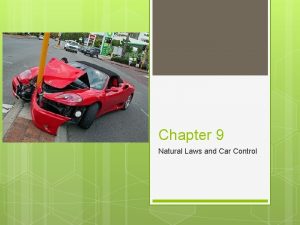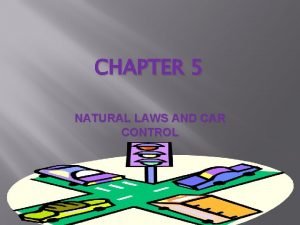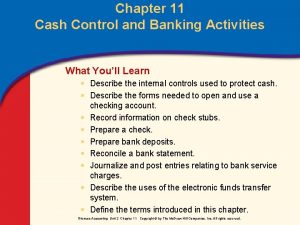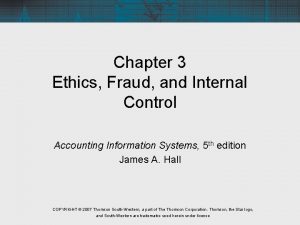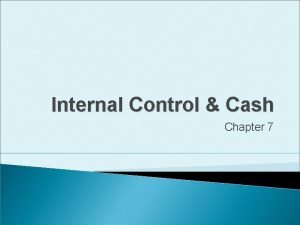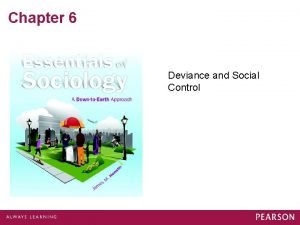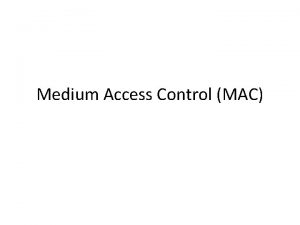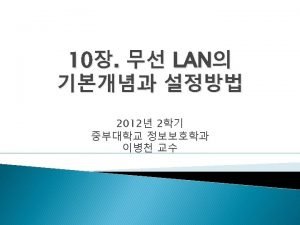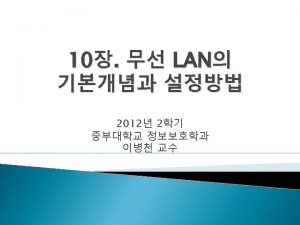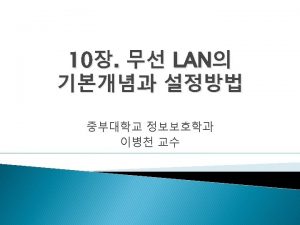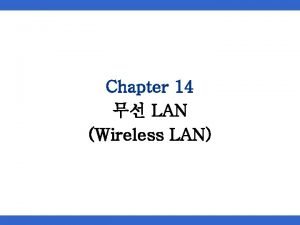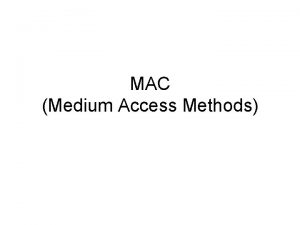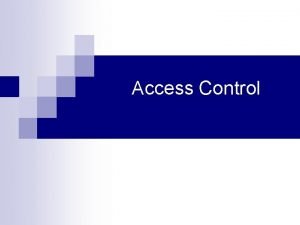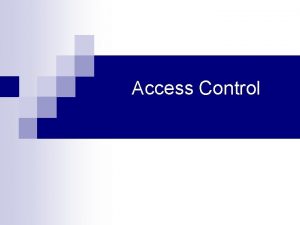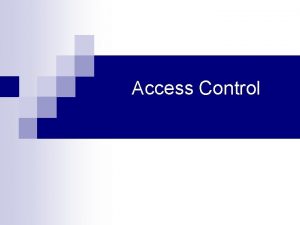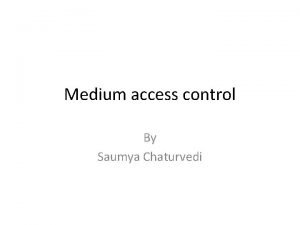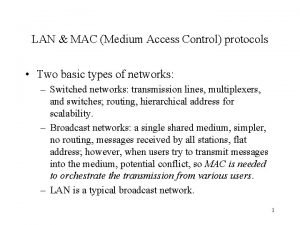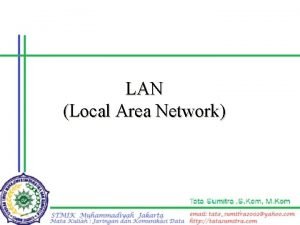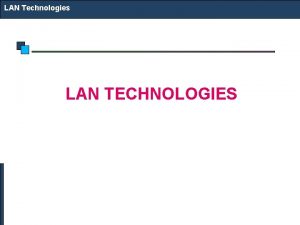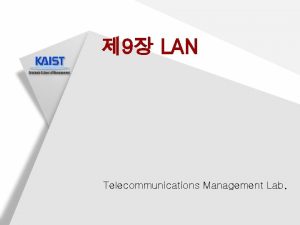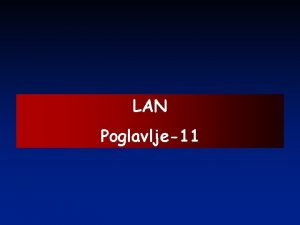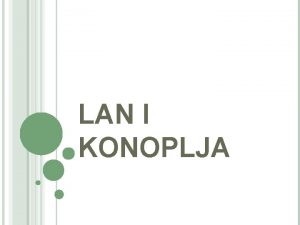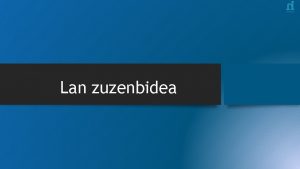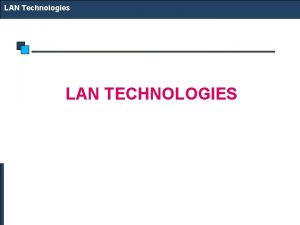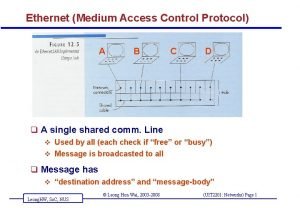CHAPTER 6 MEDIUM ACCESS CONTROL PROTOCOL AND LAN


















































































































































- Slides: 146

CHAPTER 6 MEDIUM ACCESS CONTROL PROTOCOL AND LAN. 1

Figure 6. 1 Taxonomy of multiple-access protocols discussed in this chapter 2

6 -1 RANDOM ACCESS In random access or contention methods, no station is superior to another station and none is assigned the control over another. No station permits, or does not permit, another station to send. At each instance, a station that has data to send uses a procedure defined by the protocol to make a decision on whether or not to send. Topics discussed in this section: ALOHA Carrier Sense Multiple Access with Collision Detection Carrier Sense Multiple Access with Collision Avoidance 3

ALOHA • Wireless link to provide data transfer between main campus & remote campuses of University of Hawaii • Simplest solution: just do it – A station transmits whenever it has data to transmit – If more than one frames are transmitted, they interfere with each other (collide) and are lost – If ACK not received within timeout, then a station picks random backoff time (to avoid repeated collision) – Station retransmits frame after backoff time First transmission t 0 -X t 0 Backoff period B Retransmission t t 0+X Vulnerable period t 0+X+2 tprop + B Time-out 4

ALOHA Model • Definitions and assumptions – X frame transmission time (assume constant) – S: throughput (average # successful frame transmissions per X seconds) – G: load (average # transmission attempts per X sec. ) – Psuccess : probability a frame transmission is successful X Prior interval X frame transmission • Any transmission that begins during vulnerable period leads to collision • Success if no arrivals during 2 X 5 seconds

Abramson’s Assumption • What is probability of no arrivals in vulnerable period? • Abramson assumption: Effect of backoff algorithm is that frame arrivals are equally likely to occur at any time interval • G is avg. # arrivals per X seconds • Divide X into n intervals of duration D=X/n • p = probability of arrival in D interval, then G = n p since there are n intervals in X seconds 6

Throughput of ALOHA e-2 = 0. 184 • Collisions are means for coordinating access • Max throughput is rmax= 1/2 e (18. 4%) • Bimodal behavior: Small G, S≈G Large G, S↓ 0 • Collisions can snowball and drop 7 throughput to zero

Figure 6. 3 Frames in a pure ALOHA network 8

Figure 6. 4 Procedure for pure ALOHA protocol 9

Example 6. 1 The stations on a wireless ALOHA network are a maximum of 600 km apart. If we assume that signals propagate at 3 × 108 m/s, we find Tp = (600 × 105 ) / (3 × 108 ) = 2 ms. Now we can find the value of TB for different values of K. a. For K = 1, the range is {0, 1}. The station needs to| generate a random number with a value of 0 or 1. This means that TB is either 0 ms (0 × 2) or 2 ms (1 × 2), based on the outcome of the random variable. 10

Example 6. 1 (continued) b. For K = 2, the range is {0, 1, 2, 3}. This means that TB can be 0, 2, 4, or 6 ms, based on the outcome of the random variable. c. For K = 3, the range is {0, 1, 2, 3, 4, 5, 6, 7}. This means that TB can be 0, 2, 4, . . . , 14 ms, based on the outcome of the random variable. d. We need to mention that if K > 10, it is normally set to 10. 11

Figure 6. 5 Vulnerable time for pure ALOHA protocol 12

Example 6. 2 A pure ALOHA network transmits 200 -bit frames on a shared channel of 200 kbps. What is the requirement to make this frame collision-free? Solution Average frame transmission time Tfr is 200 bits/200 kbps or 1 ms. The vulnerable time is 2 × 1 ms = 2 ms. This means no station should send later than 1 ms before this station starts transmission and no station should start sending during the one 1 -ms period that this station is sending. 13

Note The throughput for pure ALOHA is S = G × e − 2 G. The maximum throughput Smax = 0. 184 when G= (1/2). 14

Example 6. 3 A pure ALOHA network transmits 200 -bit frames on a shared channel of 200 kbps. What is the throughput if the system (all stations together) produces a. 1000 frames per second b. 500 frames per second c. 250 frames per second. Solution The frame transmission time is 200/200 kbps or 1 ms. a. If the system creates 1000 frames per second, this is 1 frame per millisecond. The load is 1. In this case S = G× e− 2 G or S = 0. 135 (13. 5 percent). This means that the throughput is 1000 × 0. 135 = 135 frames. Only 135 frames out of 1000 will probably survive. 15

Example 6. 3 (continued) b. If the system creates 500 frames per second, this is (1/2) frame per millisecond. The load is (1/2). In this case S = G × e − 2 G or S = 0. 184 (18. 4 percent). This means that the throughput is 500 × 0. 184 = 92 and that only 92 frames out of 500 will probably survive. Note that this is the maximum throughput case, percentagewise. c. If the system creates 250 frames per second, this is (1/4) frame per millisecond. The load is (1/4). In this case S = G × e − 2 G or S = 0. 152 (15. 2 percent). This means that the throughput is 250 × 0. 152 = 38. Only 38 frames out of 250 will probably survive. 16

Slotted ALOHA • Time is slotted in X seconds slots • Stations synchronized to frame times • Stations transmit frames in first slot after frame arrival • Backoff intervals in multiples of slots Backoff period k. X (k+1)X Vulnerabl eperiod t 0 +X+2 tprop B t t 0 +X+2 tprop+ B Time-out Only frames that arrive during prior X seconds collide 17

Figure 6. 6 Frames in a slotted ALOHA network 18

Note The throughput for slotted ALOHA is S = G × e−G. The maximum throughput Smax = 0. 368 when G = 1. 19

Figure 6. 7 Vulnerable time for slotted ALOHA protocol 20

Example 6. 4 A slotted ALOHA network transmits 200 -bit frames on a shared channel of 200 kbps. What is the throughput if the system (all stations together) produces a. 1000 frames per second b. 500 frames per second c. 250 frames per second. Solution The frame transmission time is 200/200 kbps or 1 ms. a. If the system creates 1000 frames per second, this is 1 frame per millisecond. The load is 1. In this case S = G× e−G or S = 0. 368 (36. 8 percent). This means that the throughput is 1000 × 0. 0368 = 368 frames. Only 386 frames out of 1000 will probably survive. 21

Carrier Sensing Multiple Access (CSMA) • A station senses the channel before it starts transmission – If busy, either wait or schedule backoff (different options) – If idle, start transmission – Vulnerable period is reduced to tprop (due to channel capture effect) – When collisions occur they involve entire frame transmission times – If tprop >X (or if a>1), no gain compared to ALOHA or slotted ALOHA Station A begins transmission at t=0 Station A captures channel at t = tprop A A 22

CSMA Options • Transmitter behavior when busy channel is sensed – 1 -persistent CSMA (most greedy) • Start transmission as soon as the channel becomes idle • Low delay and low efficiency – Non-persistent CSMA (least greedy) • Wait a backoff period, then sense carrier again • High delay and high efficiency – p-persistent CSMA (adjustable greedy) • Wait till channel becomes idle, transmit with prob. p; or wait one mini-slot time & re-sense with probability 1 -p • Delay and efficiency can be balanced 23 Sensing

Figure 6. 8 Collision of the first bit in CSMA/CD 24

Figure 6. 9 Collision and abortion in CSMA/CD 25

Example 6. 5 A network using CSMA/CD has a bandwidth of 10 Mbps. If the maximum propagation time (including the delays in the devices and ignoring the time needed to send a jamming signal, as we see later) is 25. 6 μs, what is the minimum size of the frame? Solution The frame transmission time is Tfr = 2 × Tp = 51. 2 μs. This means, in the worst case, a station needs to transmit for a period of 51. 2 μs to detect the collision. The minimum size of the frame is 10 Mbps × 51. 2 μs = 512 bits or 64 bytes. This is actually the minimum size of the frame for Standard Ethernet. 26

Figure 6. 10 Flow diagram for the CSMA/CD 27

Figure 6. 11 Energy level during transmission, idleness, or collision 28

Figure 6. 12 Timing in CSMA/CA 29

Figure 6. 13 Flow diagram for CSMA/CA 30

6 -2 CONTROLLED ACCESS In controlled access, the stations consult one another to find which station has the right to send. A station cannot send unless it has been authorized by other stations. We discuss three popular controlled-access methods. Topics discussed in this section: Reservation Polling Token Passing 31

Reservations Systems • Centralized systems: A central controller accepts requests from stations and issues grants to transmit – Frequency Division Duplex (FDD): Separate frequency bands for uplink & downlink – Time-Division Duplex (TDD): Uplink & downlink time-share the same channel • Distributed systems: Stations implement a decentralized algorithm to determine transmission order Central Controller 32

Reservation Systems Reservation interval r d Frame transmissions d d r d Cycle n r = 1 2 d d Time Cycle (n + 1) 3 M • Transmissions organized into cycles • Cycle: reservation interval + frame transmissions • Reservation interval has a minislot for each station to request reservations for frame transmissions 33

Reservation System Options • Centralized or distributed system – Centralized systems: A central controller listens to reservation information, decides order of transmission, issues grants – Distributed systems: Each station determines its slot for transmission from the reservation information • Single or Multiple Frames – Single frame reservation: Only one frame transmission can be reserved within a reservation cycle – Multiple frame reservation: More than one frame transmission can be reserved within a frame • Channelized or Random Access Reservations – Channelized (typically TDMA) reservation: Reservation messages from different stations are multiplexed without any risk of collision – Random access reservation: Each station transmits reservation message randomly until the message goes through 34

Example • Initially stations 3 & 5 have reservations to transmit frames (a) r 3 5 8 r 3 t • Station 8 becomes active and makes reservation • Cycle now also includes frame transmissions from station 8 (b) 8 r 3 5 8 r 3 t 35

Efficiency of Reservation Systems • Assume minislot duration = v. X • TDM single frame reservation scheme – If propagation delay is negligible, a single frame transmission requires (1+v)X seconds – Link is fully loaded when all stations transmit, maximum efficiency is: • TDM k frame reservation scheme – If k frame transmissions can be reserved with a reservation message and if there are M stations, as many as Mk frames can be transmitted in XM(k+v) seconds – Maximum efficiency is: 36

Random Access Reservation Systems • Large number of light traffic stations – Dedicating a minislot to each station is inefficient • Slotted ALOHA reservation scheme – Stations use slotted Aloha on reservation minislots – On average, each reservation takes at least e minislot attempts – Effective time required for the reservation is 2. 71 v. X 1 X ρmax = = X(1+ev) 1 + 2. 71 v 37

Polling Systems • Centralized polling systems: A central controller transmits polling messages to stations according to a certain order • Distributed polling systems: A permit for frame transmission is passed from station to station according to a certain order • A signaling procedure exists for setting up order Central Controller 38

Polling System Options • Service Limits: How much is a station allowed to transmit per poll? – Exhaustive: until station’s data buffer is empty (including new frame arrivals) – Gated: all data in buffer when poll arrives – Frame-Limited: one frame per poll – Time-Limited: up to some maximum time • Priority mechanisms – More bandwidth & lower delay for stations that appear multiple times in the polling list – Issue polls for stations with message of priority k or higher 39

Figure 6. 14 Select and poll functions in polling access method 40

Comparison of MAC approaches • Aloha & Slotted Aloha – Simple & quick transfer at very low load – Accommodates large number of low-traffic bursty users – Highly variable delay at moderate loads – Efficiency does not depend on a • CSMA-CD – Quick transfer and high efficiency for low delaybandwidth product – Can accommodate large number of bursty users – Variable and unpredictable delay 41

Comparison of MAC approaches • Reservation – On-demand transmission of bursty or steady streams – Accommodates large number of low-traffic users with slotted Aloha reservations – Can incorporate Qo. S – Handles large delay-bandwidth product via delayed grants • Polling – Generalization of time-division multiplexing – Provides fairness through regular access opportunities – Can provide bounds on access delay – Performance deteriorates with large delay-bandwidth product 42

Chapter 6 Medium Access Control Protocols and Local Area Networks Channelization 43

Why Channelization? • Channelization – Semi-static bandwidth allocation of portion of shared medium to a given user • Highly efficient for constant-bit rate traffic • Preferred approach in – Cellular telephone networks – Terrestrial & satellite broadcast radio & TV 44

Why not Channelization? • Inflexible in allocation of bandwidth to users with different requirements • Inefficient for bursty traffic • Does not scale well to large numbers of users – Average transfer delay increases with number of users M • Dynamic MAC much better at handling bursty traffic 45

Channelization Approaches • Frequency Division Multiple Access (FDMA) – Frequency band allocated to users – Broadcast radio & TV, analog cellular phone • Time Division Multiple Access (TDMA) – Periodic time slots allocated to users – Telephone backbone, GSM digital cellular phone • Code Division Multiple Access (CDMA) – Code allocated to users – Cellular phones, 3 G cellular 46

Guardbands • FDMA – Frequency bands must be non-overlapping to prevent interference – Guardbands ensure separation; form of overhead • TDMA – Stations must be synchronized to common clock – Time gaps between transmission bursts from different stations to prevent collisions; form of overhead – Must take into account propagation delays 49

CDMA Spread Spectrum Signal Transmitter from one user Binary information R 1 bps W 1 Hz R >> R 1 bps W >> W 1 Hz Unique user binary random sequence Radio antenna Digital modulation • User information mapped into: +1 or -1 for T sec. • Multiply user information by pseudo- random binary pattern of G “chips” of +1’s and -1’s • Resulting spread spectrum signal occupies G times more bandwidth: W = GW 1 51 • Modulate the spread signal by sinusoid at appropriate f

CDMA Demodulation Signal and residual interference Signals from all transmitters Digital demodulation Correlate to user binary random sequence Binary information • Recover spread spectrum signal • Synchronize to and multiply spread signal by same pseudorandom binary pattern used at the transmitter • In absence of other transmitters & noise, we should recover the original +1 or -1 of user information • Other transmitters using different codes appear as residual 52 noise

Pseudorandom pattern generator • Feedback shift register with appropriate feedback taps can be used to generate pseudorandom sequence g 2 g 0 R 1 g 3 R 2 output g(x) = x 3 + x 2 + 1 The coefficients of a primitive generator polynomial determine the feedback taps Time R 0 R 1 R 2 0 1 0 1 0 2 1 0 1 3 1 1 0 4 1 1 1 5 0 1 1 6 0 0 1 7 1 0 0 Sequence repeats from here onwards 53

Channelization in Code Space • Each channel uses a different pseudorandom code • Codes should have low cross-correlation – If they differ in approximately half the bits the correlation between codes is close to zero and the effect at the output of each other’s receiver is small • As number of users increases, effect of other users on a given receiver increases as additive noise • CDMA has gradual increase in BER due to noise as number of users is increased • Interference between channels can be eliminated is codes are selected so they are orthogonal and if receivers and transmitters are synchronized – Shown in next example 54

Example: CDMA with 3 users • Assume three users share same medium • Users are synchronized & use different 4 -bit orthogonal codes: {-1, -1, -1}, {-1, +1, -1, +1}, {-1, +1, +1}, {1, +1, -1}, -1 -1 +1 User 1 x Receiver +1 -1 +1 User 2 x +1 User 3 + +1 -1 x Shared Medium 55

Sum signal is input to receiver Channel 1: 110 -> +1+1 -1 -> (-1, -1, -1, -1), (+1, +1, +1) Channel 2: 010 -> -1+1 -1 -> (+1, -1, +1, -1), (-1, +1, -1, +1), (+1, -1, +1, -1) Channel 3: 001 -> -1 -1+1 -> (+1, +1, -1, -1), (-1, +1, +1) Sum Signal: (+1, -1, -3), (-1, +1, -3, -1), (+1, -1, +3, +1) Channel 1 Channel 2 Channel 3 Sum Signal 56

Example: Receiver for Station 2 • Each receiver takes sum signal and integrates by code sequence of desired transmitter • Integrate over T seconds to smooth out noise Decoding signal from station 2 + x Integrate over T sec Shared Medium 57

Decoding at Receiver 2 Sum Signal: Channel 2 Sequence: Correlator Output: Integrated Output: Binary Output: (+1, -1, -3), (-1, +1, -3, -1), (+1, -1, +3, +1) (-1, +1, -1, +1), (-1, +1, -1, +1) (-1, +1, -3), (+1, +3, -1), (-1, -3, +1) -4, +4, -4 0, 1, 0 Sum Signal X = Channel 2 Sequence Correlator Output +4 Integrator Output 58 -4 -4

Walsh Functions • Walsh functions are provide orthogonal code sequences by mapping 0 to -1 and 1 to +1 • Walsh matrices constructed recursively as follows: W 2 n= W 1= W 4= 0 W 2= 0 0 0 1 1 0 Wn Wnc 0 0 0 1 W 8= 0 0 0 0 0 1 0 1 0 0 1 1 0 0 0 0 1 1 0 1 1 0 0 1 59

Channelization in Cellular Telephone Networks • Cellular networks use frequency reuse – Band of frequencies reused in other cells that are sufficiently far that interference is not a problem – Cellular networks provide voice connections which is steady stream • FDMA used in AMPS • TDMA used in IS-54 and GSM • CDMA used in IS-95 60

Advanced Mobile Phone System • Advanced Mobile Phone System (AMPS) – – First generation cellular telephone system in US Analog voice channels of 30 k. Hz Forward channels from base station to mobiles Reverse channels from mobiles to base • Frequency band 50 MHz wide in 800 MHz region allocated to two service providers: “A” and “B” A A B AB A A B Frequency 824 MHz 849 MHz 869 MHz 894 MHz 61

AMPS Spectral Efficiency • 50 MHz @ 30 k. Hz gives 832 2 -way channels • Each service provider has – 416 2 -way channels – 21 channels used for call setup & control – 395 channels used for voice – AMPS uses 7 -cell frequency reuse pattern, so each cell has 395/7 voice channels • AMPS spectrum efficiency: #calls/cell/MHz – (395. 7)/(25 MHz) = 2. 26 calls/cell/MHz 62

Interim Standard 54/136 • IS-54, and later IS-136, developed to meet demand for cellular phone service • Digital methods to increase capacity • A 30 -k. Hz AMPS channel converted into several TDMA channels – – 1 AMPS channel carries 48. 6 kbps stream Stream arranged in 6 -slot 40 ms cycles 1 slot = 324 bits → 8. 1 kbps per slot 1 full-rate channel: 2 slots to carry 1 voice signal • 1 AMPS channel carries 3 voice calls • 30 k. Hz spacing also used in 1. 9 GHz PCS band 63

IS-54 TDMA frame structure Base to mobile 6 2 1 3 4 5 1 6 3 2 Time Mobile to base 1 2 3 4 5 6 1 2 3 40 ms 4 Time • 416 AMPS channels x 3 = 1248 digital channels • Assume 21 channels for calls setup and control • IS-54 spectrum efficiency: #calls/cell/MHz – (1227/7)/(25 MHz) = 3 calls/cell/MHz 64

Global System for Mobile Communications (GSM) • European digital cellular telephone system • 890 -915 MHz & 935 -960 MHz band • PCS: 1800 MHz (Europe), 1900 MHz (N. Am. ) • Hybrid TDMA/FDMA – Carrier signals 200 k. Hz apart Initial one-way Existingcarriers Existing Initial – 25 MHz services give 124 GSM services GSM 890 MHz 905 MHz reverse 915 MHz 935 MHz 950 MHz 960 MHz forward 65

GSM TDMA Structure • Each carrier signal carries traffic and control channels • 1 full rate traffic channel = 1 slot in every traffic frame Slow Associated Traffic Channels Control Channel 24 slots#0 -11 x 114 bits/slot / 120 ms#13 -24 = 22. 8 kbps 0 1 2 3 4 5 6 7 8 9 10 11 12 13 14 15 16 17 18 19 20 21 22 23 24 25 1 multiframe = 26 frames 120 ms long 0 1 2 3 4 5 6 7 1 TDMA frame = 8 slots 1 slot = 114 data bits / 156. 25 bits total 66

GSM Spectrum Efficiency • Error correction coding used in 22. 8 kbps to carry 13 kbps digital voice signal • Frequency reuse of 3 or 4 possible • 124 carriers x 8 = 992 traffic channels • Spectrum efficiency for GSM: – (992/3)/50 MHz = 6. 61 calls/cell/MHz 67

Interim Standard 95 (IS-95) • CDMA digital cellular telephone system • Operates in AMPS & PCS bands • 1 signal occupies 1. 23 MHz – 41 AMPS signals • All base stations are synchronized to a common clock – Global Positioning System accuracy to 1 msec • Forward channels use orthogonal spreading • Reverse channels use non-orthogonal spreading 68

Base-to-Mobile Channels Walsh channel j sequence 9600 bps Error coding, 19, 200 sym/s repetition, User info interleaving 19200 sym/s User mask (ESN) • • Long code generator Decimator 1. 2288 Mcps I short code spreading sequence baseband filter I(t) baseband filter Q(t) Q short code spreading sequence Basic user information rate is 9. 6 kbps Doubled after error correction coding Converted to +1 s Multiplied by 19. 2 ksym/sec stream derived from 42 -bit register long-code sequence generator which depends 69 on electronic serial number

Base-to-Mobile Channels Walsh channel j sequence 9600 bps Error coding, 19, 200 sym/s repetition, User info interleaving 19200 sym/s User mask (ESN) Long code generator Decimator 1. 2288 Mcps I short code spreading sequence baseband filter I(t) baseband filter Q(t) Q short code spreading sequence • Each symbol multiplied by 64 -bit chip Walsh orthogonal sequence (19200 x 64 = 1. 2288 Msym/sec) • Each base station uses the same 15 -bit register short sequence to spread signal prior to transmission 70 • Base station synchronizes all its transmissions

Pilot Tone & Synchronization Walsh channel 0 sequence I short code spreading sequence baseband filter I(t) baseband filter Q(t) Pilot channel all 1 s Q short code spreading sequence • All 0’s Walsh sequence reserved to generate pilot tone • Short code sequences transmitted to all receivers • Receivers can then recover user information using Walsh orthogonal sequence • Different base stations use different phase of same short sequence 71 • Mobiles compare signal strengths of pilots from different

Mobile-to-Base Channels I short code spreading sequence 9600 bps Error coding, repetition, User info interleaving User mask (ESN) Long code generator 307, 200 sym/s 1. 2288 Mcps 1/2 chip delay D baseband filter I(t) baseband filter Q(t) Q short code spreading sequence • 9. 6 kbps user information coded and spread to 307. 2 kbps • Spread by 4 by multiplying by long code sequence • Different mobiles use different phase of long code sequence • Multiplied by short code sequence 72

IS-95 Spectrum Efficiency • Spread spectrum reduces interference – Signals arriving at a base station from within or from outside its cell are uncorrelated because mobiles have different long code sequences – Signals arriving at mobiles from different base stations are uncorrelated because they use different phases of the short code sequence • Enables reuse factor of 1 • Goodman [1997] estimates spectrum efficiency for IS-95 is: – between 12 & 45 call/cell/MHz • Much higher spectrum efficiency than IS-54 & 73

Chapter 6 Medium Access Control Protocols and Local Area Networks Delay Performance 74

Statistical Multiplexing & Random Access • Multiplexing concentrates bursty traffic onto a shared line • Packets are encapsulated in frames and queued in a buffer prior to transmission • Central control allows variety of service disciplines • MAC allows sharing of a broadcast medium • Packets are encapsulated in frames and queued at station prior to transmission • Decentralized control “wastes” bandwidth to allow sharing A A B Shared Medium B Buffer R bps Output line C Input lines R bps C Input lines 75

Performance Issues in Statistical Multiplexing & Multiple Access Application Properties • How often are packets generated? • How long are packets? • What are loss & delay requirements? System Performance • Transfer Delay • Packet/frame Loss • Efficiency & Throughput • Priority, scheduling, & Qo. S A A B Shared Medium B Buffer R bps Output line C Input lines R bps C Input lines 76

M/G/1 Queueing Model for Statistical Multiplexer General service Poisson Arrivals rate • Arrival Model – Independent frame interarrival times: – Average 1/ – Exponential distribution – “Poisson Arrivals” • Infinite Buffer – No Blocking buffer time X server • Frame Length Model – Independent frame transmission times X – Average E[X] = 1/m – General distribution – Constant, exponential, … • Load r= /m – Stability Condition: r<1 We will use M/G/1 model as baseline for MAC performance 77

M/G/1 Performance Results (From Appendix A) Total Delay = Waiting Time + Service Time Average Waiting Time: Average Total Delay: Example: M/D/1 78

M/G/1 Vacation Model • In M/G/1 model, a frame arriving to an empty multiplexer begins transmission immediately • In many MACs, there is a delay before transmission can begin • M/G/1 Vacation Model: when system empties, server goes away on vacation for random time V 79 Extra delay term

Performance of FDMA & CDMA Channelization Bursty Traffic 1 2 . . . M • • R/M R/M Channelized Medium M stations do not interact Poisson arrivals /M fr/sec Constant frame length L bits Transmission time at full rate – X=L/R • Station bit rate is R/M – Neglect guardbands • Transmission time from station – L/(R/M)=M(L/R) =MX – M times longer • Load at one station: 80 – r=( /M)MX= = X

Transfer Delay for FDMA and CDMA ML/R • Time-slotted transmission from each station • When station becomes empty, transmitter goes on vacation for 1 time slot of constant duration V=MX • Average Total Transfer Delay is: The delay increases in proportion with M, the number of stations Allocated bandwidth to a given station is wasted when other stations 81 have data to send

Transfer Delay of TDMA & CDMA FDMA Our frame arrives and finds two frames in queue Second frame transmitted First frame transmitted 0 TDMA Our frame finishes transmission 3 6 t 9 FDMA & TDMA have same waiting time Our frame arrives and finds two frames in queue 0 1 First frame transmitted Last TDMA frame finishes sooner Our frame finishes transmission 3 4 Second frame transmitted 6 7 t 9 82

Transfer Delay for TDMA • Time-slotted transmission from each station • Same waiting time as FDMA • Frame service time is X • Average Total Transfer Delay is: Better than FDMA & CDMA Total Delay still grows proportional to M 83

What is a LAN? Local area means: • Private ownership – freedom from regulatory constraints of WANs • Short distance (~1 km) between computers – low cost – very high-speed, relatively error-free communication – complex error control unnecessary • Machines are constantly moved – Keeping track of location of computers a chore – Simply give each machine a unique address – Broadcast all messages to all machines in the LAN • Need a medium access control protocol 84

Chapter 6 Medium Access Control Protocols and Local Area Networks Overview of LANs 85

Typical LAN Structure • Transmission Medium • Network Interface Card (NIC) • Unique MAC “physical” address Ethernet Processor RAM ROM RAM 86

Medium Access Control Sublayer • In IEEE 802. 1, Data Link Layer divided into: 1. Medium Access Control Sublayer – – Coordinate access to medium Connectionless frame transfer service Machines identified by MAC/physical address Broadcast frames with MAC addresses 2. Logical Link Control Sublayer – Between Network layer & MAC sublayer 87

MAC Sub-layer OSI IEEE 802 Network layer LLC Network layer 802. 2 Logical link control Data link layer 802. 11 802. 3 802. 5 MAC CSMA-CD Token Ring Wireless LAN Physical layer Various physical layers Other LANs Physical layer 88

Logical Link Control Layer IEEE 802. 2: LLC enhances service provided by MAC C A A Unreliable Datagram Service Reliable frame service C LLC LLC MAC MAC MAC PHY PHY PHY 89

Logical Link Control Services • Type 1: Unacknowledged connectionless service – Unnumbered frame mode of HDLC • Type 2: Reliable connection-oriented service – Asynchronous balanced mode of HDLC • Type 3: Acknowledged connectionless service • Additional addressing – A workstation has a single MAC physical address – Can handle several logical connections, distinguished by their SAP (service access points). 90

LLC PDU Structure 1 1 byte 1 Source SAP Address Destination SAP Address 1 or 2 bytes Control Source SAP Address Destination SAP Address C/R I/G 1 Information 7 bits I/G = Individual or group address C/R = Command or response frame 1 7 bits Examples of SAP Addresses: 06 IP packet E 0 Novell IPX FE OSI packet AA Sub. Network Access protocol (SNAP) 91

Encapsulation of MAC frames IP Packet LLC PDU Header MAC Header IP Data FCS 92

Chapter 6 Medium Access Control Protocols and Local Area Networks Ethernet 93

A bit of history… • 1970 ALOHAnet radio network deployed in Hawaiian islands • 1973 Metcalf and Boggs invent Ethernet, random access in wired net • 1979 DIX Ethernet II Standard • 1985 IEEE 802. 3 LAN Standard (10 Mbps) • 1995 Fast Ethernet (100 Mbps) • 1998 Gigabit Ethernet • 2002 10 Gigabit Ethernet Metcalf’s Sketch • Ethernet is the dominant LAN standard 94

IEEE 802. 3 MAC: Ethernet MAC Protocol: • CSMA/CD • Slot Time is the critical system parameter – upper bound on time to detect collision – upper bound on time to acquire channel – upper bound on length of frame segment generated by collision – quantum for retransmission scheduling – max{round-trip propagation, MAC jam time} • Truncated binary exponential backoff – for retransmission n: 0 < r < 2 k, where k=min(n, 10) 95 – Give up after 16 retransmissions

IEEE 802. 3 Original Parameters • Transmission Rate: 10 Mbps • Min Frame: 512 bits = 64 bytes • Slot time: 512 bits/10 Mbps = 51. 2 msec – 51. 2 msec x 2 x 105 km/sec =10. 24 km, 1 way – 5. 12 km round trip distance • Max Length: 2500 meters + 4 repeaters • Each x 10 increase in bit rate, must be accompanied by x 10 decrease in distance 96

IEEE 802. 3 MAC Frame 7 1 Preamble SD Synch Start frame 6 Destination address 6 Source address 2 Length Information Pad 4 FCS 64 - 1518 bytes Every frame transmission begins “from scratch” Preamble helps receivers synchronize their clocks to transmitter clock 7 bytes of 1010 generate a square wave Start frame byte changes to 10101011 Receivers look for change in 10 pattern 97

IEEE 802. 3 MAC Frame 7 1 Preamble SD Synch 6 Destination address Start frame 0 Single address 1 Group address 0 Local address 1 Global address 6 Source address 2 Length Information Pad 4 FCS 64 - 1518 bytes • Destination address • single address • group address • broadcast = 111. . . 111 Addresses • local or global • Global addresses • first 24 bits assigned to manufacturer; • next 24 bits assigned by manufacturer • Cisco 00 -00 -0 C 98 • 3 COM 02 -60 -8 C

IEEE 802. 3 MAC Frame 7 1 Preamble SD Synch Start frame 6 Destination address 6 Source address 2 Length Information Pad 4 FCS 64 - 1518 bytes Length: # bytes in information field Max frame 1518 bytes, excluding preamble & SD Max information 1500 bytes: 05 DC Pad: ensures min frame of 64 bytes FCS: CCITT-32 CRC, covers addresses, length, information, pad fields NIC discards frames with improper lengths or failed CRC 99

DIX Ethernet II Frame Structure Ethernet frame 7 1 Preamble SD Synch Start frame 6 Destination address 6 Source address 2 Type 4 Information FCS 64 - 1518 bytes • DIX: Digital, Intel, Xerox joint Ethernet specification • Type Field: to identify protocol of PDU in information field, e. g. IP, ARP • Framing: How does receiver know frame length? 100

Sub. Network Address Protocol (SNAP) • IEEE standards assume LLC always used • Higher layer protocols developed for DIX expect type field • DSAP, SSAP = AA, AA indicate SNAP PDU; • 03 = Type 1 (connectionless) service Type ORG to encapsulate • SNAP used Ethernet II frames 3 2 SNAP PDU LLC PDU Information AA AA 03 1 MAC Header SNAP Header 1 1 FCS 101

IEEE 802. 3 Physical Layer Table 6. 2 IEEE 802. 3 10 Mbps medium alternatives Medium Max. Segment Length Topology (a) 10 base 5 10 base 2 10 base. T 10 base. FX Thick coax Thin coax Twisted pair Optical fiber 500 m 200 m 100 m 2 km Bus Star Point-topoint link transceivers Thick Coax: Stiff, hard to work with (b) Hubs & Switches! T connectors flaky 102

Ethernet Hubs & Switches Single collision domain (a) (b) High-Speed backplane or interconnection fabric Twisted Pair Cheap Easy to work with Reliable Star-topology CSMA-CD Twisted Pair Cheap Bridging increases scalability Separate collision domains Full duplex operation 103

Fast Ethernet Table 6. 4 IEEE 802. 3 100 Mbps Ethernet medium alternatives 100 base. T 4 100 base. T 100 base. FX Medium Twisted pair category 3 UTP 4 pairs Twisted pair category 5 UTP two pairs Optical fiber multimode Two strands Max. Segment Length 100 m 2 km Topology Star To preserve compatibility with 10 Mbps Ethernet: • Same frame format, same interfaces, same protocols • Hub topology only with twisted pair & fiber • Bus topology & coaxial cable abandoned • Category 3 twisted pair (ordinary telephone grade) requires 4 pairs 104 • Category 5 twisted pair requires 2 pairs (most popular)

Gigabit Ethernet Table 6. 3 IEEE 802. 3 1 Gbps Fast Ethernet medium alternatives Medium Max. Segment Length Topology 1000 base. SX 1000 base. LX 1000 base. CX 1000 base. T Optical fiber multimode Two strands Optical fiber single mode Two strands Shielded copper cable Twisted pair category 5 UTP 550 m 5 km 25 m 100 m Star • Slot time increased to 512 bytes • Small frames need to be extended to 512 B • Frame bursting to allow stations to transmit burst of short frames • Frame structure preserved but CSMA-CD essentially abandoned 105 • Extensive deployment in backbone of enterprise data

10 Gigabit Ethernet Table 6. 5 IEEE 802. 3 10 Gbps Ethernet medium alternatives 10 Gbase. SR Two optical fibers Multimode at Medium 850 nm 64 B 66 B code Max. Segment Length • • • 300 m 10 GBase. LR 10 Gbase. EW 10 Gbase. LX 4 Two optical fibers Single-mode at 1310 nm Single-mode at 1550 nm SONET compatibility Two optical fibers multimode/singlemode with four wavelengths at 1310 nm band 8 B 10 B code 64 B 66 B 10 km 40 km 300 m – 10 km Frame structure preserved CSMA-CD protocol officially abandoned LAN PHY for local network applications WAN PHY for wide area interconnection using SONET OC-192 c Extensive deployment in metro networks anticipated 106

Typical Ethernet Deployment Server farm Server Switch/router Server Ethernet switch 100 Mbps links Hub 10 Mbps links Department A Server Gigabit Ethernet links Ethernet switch 100 Mbps links Server Hub 10 Mbps links Department B Switch/router Ethernet switch 100 Mbps links Server Hub 10 Mbps links Department 107 C

Chapter 6 Medium Access Control Protocols and Local Area Networks Token Ring and FDDI 108

IEEE 802. 5 Ring LAN • Unidirectional ring network • 4 Mbps and 16 Mbps on twisted pair – Differential Manchester line coding • Token passing protocol provides access üFairness üAccess priorities û Breaks in ring bring entire network down • Reliability by using star topology 109

Star Topology Ring LAN • Stations connected in star fashion to wiring closet – Use existing telephone wiring • Ring implemented inside equipment box • Relays can bypass failed links or stations A Wiring Center E B C D 110

Token Frame Format Data frame format 1 1 SD AC 1 FC 6 Destination address Token frame format Starting delimiter Access control Ending delimiter SD 1 Information FCS ED 1 FS AC ED J K 0 PPP T 4 6 Source address M J K 1 0 0 RRR I E J, K nondata symbols (line code) J begins as “ 0” but no transition K begins as “ 1” but no transition PPP=priority; T=token bit M=monitor bit; RRR=reservation T=0 token; T=1 data I = intermediate-frame bit E = error-detection bit 111

Data Frame Format Data frame format 1 1 SD AC 1 FC 6 Destination address 6 Source address 4 1 Information FCS ED FF Addressing 48 bit format as in 802. 3 Information Length limited by allowable token holding time FCS CCITT-32 CRC Frame status A C xx A C x x FS FF = frame type; FF=01 data frame FF=00 MAC control frame ZZZZZZ type of MAC control Frame control Z Z Z 1 A = address-recognized bit xx = undefined C = frame-copied bit 112

Other Ring Functions • Priority Operation – PPP provides 8 levels of priority – Stations wait for token of equal or lower priority – Use RRR bits to “bid up” priority of next token • Ring Maintenance – Sending station must remove its frames – Error conditions • Orphan frames, disappeared token, frame corruption – Active monitor station responsible for 113

Ring Latency & Ring Reinsertion • M stations • b bit delay at each station – B=2. 5 bits (using Manchester coding) • Ring Latency: – t’ = d/n + Mb/R seconds – t’R = d. R/n + Mb bits • Example – Case 1: R=4 Mbps, M=20, 100 meter separation • Latency = 20 x 100 x 4 x 106/(2 x 108)+20 x 2. 5=90 bits – Case 2: R=16 Mbps, M=80 • Latency = 840 bits 114

(a) Low Latency (90 bit) Ring A t = 0, A begins frame (b) A A A t = 90, return t = 210, return of t = 400, last bit enters of first bit ring, reinsert token header High Latency (840 bit) Ring A A t = 0, A begins frame t = 400, transmit last bit A t = 840, arrival first frame bit A t = 960, reinsert 115 token

Fiber Distributed Data Interface (FDDI) • • • Token ring protocol for LAN/MAN Counter-rotating dual ring topology 100 Mbps on optical fiber Up to 200 km diameter, up to 500 stations Station has 10 -bit “elastic” buffer to absorb timing differences between input & output • Max frame 40, 000 bits • 500 stations @ 200 km gives ring latency of 105, 000 bits • FDDI has option to operate in multitoken mode 116

A X E B C D Dual ring becomes a single ring 117

FDDI Frame Format Data Frame Format 8 1 PRE SD 1 FC 6 Destination Address 6 Source Address 4 1 Information FCS ED 1 FS Preamble Frame control CLFFZZZZ C = synch/asynch L = address length (16 or 48 bits) FF = LLC/MAC control/reserved frame type CLFFZZZZ = 10000000 or 11000000 denotes token frame Token Frame Format PRE SD FC ED 118

Timed Token Operation • Two traffic types – Synchronous – Asynchronous • All stations in FDDI ring agree on target token rotation time (TTRT) • Station i has Si max time to send synch traffic • Token rotation time is less than 2*TTRT if – S 1 + S 2 + … + SM-1 + SM < TTRT – FDDI guarantees access delay to synch traffic Station Operation • Maintain Token Rotation Timer (TRT): time since station last received token • When token arrives, find Token Holding Time – THT = TTRT – THT > 0, station can send all synchronous traffic up to Si + THT-Si data traffic – THT < 0, station can only send synchronous traffic up to Si • As ring activity increases, 119 TRT increases and asynch traffic throttled

Chapter 6 Medium Access Control Protocols and Local Area Networks 802. 11 Wireless LAN 120

Wireless Data Communications • Wireless communications compelling üEasy, low-cost deployment üMobility & roaming: Access information anywhere üSupports personal devices üPDAs, laptops, data-cell-phones üSupports communicating devices üCameras, location devices, wireless identification û Signal strength varies in space & time û Signal can be captured by snoopers û Spectrum is limited & usually regulated 121

Ad Hoc Communications C A B D • Temporary association of group of stations – Within range of each other – Need to exchange information – E. g. Presentation in meeting, or distributed computer game, or both 122

Infrastructure Network Portal Distribution System Server Gateway to Portal the Internet AP 1 AP 2 A 1 BSS A B 2 A 2 BSS B • Permanent Access Points provide access to 123

Hidden Terminal Problem (a) A C Data Frame A transmits data frame B (b) Data Frame A B C senses medium, station A is hidden from C Data Frame C C transmits data frame & collides with A at B • New MAC: CSMA with Collision Avoidance 124

CSMA with Collision Avoidance (a) B RTS C A requests to send (b) CTS B A CTS C B announces A ok to send (c) Data Frame A sends B C remains quiet 125

IEEE 802. 11 Wireless LAN • Stimulated by availability of unlicensed spectrum – U. S. Industrial, Scientific, Medical (ISM) bands – 902 -928 MHz, 2. 400 -2. 4835 GHz, 5. 725 -5. 850 GHz • • Targeted wireless LANs @ 20 Mbps MAC for high speed wireless LAN Ad Hoc & Infrastructure networks Variety of physical layers 126

802. 11 Definitions • Basic Service Set (BSS) – Group of stations that coordinate their access using a given instance of MAC – Located in a Basic Service Area (BSA) – Stations in BSS can communicate with each other – Distinct collocated BSS’s can coexist • Extended Service Set (ESS) – Multiple BSSs interconnected by Distribution System (DS) – Each BSS is like a cell and stations in BSS communicate with an Access Point (AP) – Portals attached to DS provide access to Internet 127

Infrastructure Network Portal Distribution System Server Gateway to Portal the Internet AP 1 AP 2 A 1 BSS A B 2 A 2 BSS B 128

Distribution Services • Stations within BSS can communicate directly with each other • DS provides distribution services: – Transfer MAC SDUs between APs in ESS – Transfer MSDUs between portals & BSSs in ESS – Transfer MSDUs between stations in same BSS • Multicast, broadcast, or stations’s preference • ESS looks like single BSS to LLC layer 129

Infrastructure Services • Select AP and establish association with AP – Then can send/receive frames via AP & DS • Reassociation service to move from one AP to another AP • Dissociation service to terminate association • Authentication service to establish identity of other stations 130 • Privacy service to keep contents secret

IEEE 802. 11 MAC • MAC sublayer responsibilities – Channel access – PDU addressing, formatting, error checking – Fragmentation & reassembly of MAC SDUs • MAC security service options – Authentication & privacy • MAC management services – Roaming within ESS – Power management 131

MAC Services • Contention Service: Best effort • Contention-Free Service: time-bounded transfer • MAC can alternate between Contention Periods (CPs) & Contention-Free Periods (CFPs) Contentionfree service MSDUs Contention service Point coordination function MAC Distribution coordination function (CSMA-CA) Physical 132

Distributed Coordination Function (DCF) DIFS Contention window PIFS DIFS SIFS Busy medium Defer access Next frame Wait for reattempt time Time • DCF provides basic access service – Asynchronous best-effort data transfer – All stations contend for access to medium • CSMA-CA – Ready stations wait for completion of transmission – All stations must wait Interframe Space (IFS) 133

Priorities through Interframe Spacing DIFS Contention window PIFS DIFS SIFS Busy medium Defer access Next frame Wait for reattempt time Time • High-Priority frames wait Short IFS (SIFS) – Typically to complete exchange in progress – ACKs, CTS, data frames of segmented MSDU, etc. • PCF IFS (PIFS) to initiate Contention-Free Periods • DCF IFS (DIFS) to transmit data & MPDUs 134

Contention & Backoff Behavior • If channel is still idle after DIFS period, ready station can transmit an initial MPDU • If channel becomes busy before DIFS, then station must schedule backoff time for reattempt – Backoff period is integer # of idle contention time slots – Waiting station monitors medium & decrements backoff timer each time an idle contention slot transpires – Station can contend when backoff timer expires • A station that completes a frame transmission is not allowed to transmit immediately – Must first perform a backoff procedure 135

(a) B RTS C A requests to send (b) CTS B CTS A C B announces A ok to send (c) Data Frame B A sends (d) C remains quiet ACK B B sends ACK 136

Carrier Sensing in 802. 11 • Physical Carrier Sensing – Analyze all detected frames – Monitor relative signal strength from other sources • Virtual Carrier Sensing at MAC sublayer – Source stations informs other stations of transmission time (in msec) for an MPDU – Carried in Duration field of RTS & CTS – Stations adjust Network Allocation Vector to indicate when channel will become idle • Channel busy if either sensing is busy 137

Transmission of MPDU without RTS/CTS DIFS Data Source SIFS ACK Destination DIFS Other NAV Defer Access Wait for Reattempt Time 138

Transmission of MPDU with RTS/CTS DIFS RTS Data Source SIFS CTS SIFS Ack Destination DIFS NAV (RTS) Other NAV (CTS) NAV (Data) Defer access 139

Collisions, Losses & Errors • Collision Avoidance – When station senses channel busy, it waits until channel becomes idle for DIFS period & then begins random backoff time (in units of idle slots) – Station transmits frame when backoff timer expires – If collision occurs, recompute backoff over interval that is twice as long • Receiving stations of error-free frames send ACK – Sending station interprets non-arrival of ACK as loss – Executes backoff and then retransmits – Receiving stations use sequence numbers to identify 140 duplicate frames

Point Coordination Function • PCF provides connection-oriented, contention-free service through polling • Point coordinator (PC) in AP performs PCF • Polling table up to implementor • CFP repetition interval – Determines frequency with which CFP occurs – Initiated by beacon frame transmitted by PC in AP – Contains CFP and CP – During CFP stations may only transmit to respond to a poll from PC or to send ACK 141

PCF Frame Transfer TBTT Contention-free repetition interval SIFS B PIFS SIFS CF End D 2+Ack+ Poll D 1 + Poll Contention period U 2+ ACK U 1+ ACK Reset NAV CF_Max_duration D 1, D 2 = frame sent by point coordinator U 1, U 2 = frame sent by polled station TBTT = target beacon transmission time B = beacon frame 142

Frame Types • Management frames – Station association & disassociation with AP – Timing & synchronization – Authentication & deauthentication • Control frames – Handshaking – ACKs during data transfer • Data frames – Data transfer 143

Frame Structure 2 2 Frame Control Duration/ ID MAC header (bytes) 6 6 Address 1 Address 2 6 0 -2312 4 Address 3 Sequence control Address 4 Frame body CRC • MAC Header: 30 bytes • Frame Body: 0 -2312 bytes • CRC: CCITT-32 4 bytes CRC over MAC header & frame body 144

Frame Control (1) 2 2 Frame Control Duration/ ID • • MAC header (bytes) 6 6 Address 1 Address 2 2 2 4 Protocol version Type Subtype 1 6 2 6 0 -2312 4 Address 3 Sequence control Address 4 Frame body CRC 1 1 1 1 To From More Pwr More Retry WEP Rsvd DS DS frag mgt data Protocol version = 0 Type: Management (00), Control (01), Data (10) Subtype within frame type Type=00, subtype=association; Type=01, subtype=ACK • More. Frag=1 if another fragment of MSDU to 145

2 2 Frame Control Duration/ ID Frame Control (2) 6 6 6 2 6 0 -2312 4 Address 1 Address 2 Address 3 Sequence control Address 4 Frame body CRC 2 2 4 Protocol version Type Subtype To From DS DS Address 1 Destination address 0 0 0 1 1 0 BSSID 1 1 Receiver address Address 2 Source address 1 1 1 1 To From More Pwr More Retry WEP Rsvd DS DS frag mgt data Address 3 Address 4 BSSID N/A Data frame from station to station within a BSS N/A Data frame exiting the DS N/A Data frame destined for the DS Source address WDS frame being distributed from AP to AP Source address Source Destination address Transmitter Destination address BSSID 1 Meaning To DS = 1 if frame goes to DS; From DS = 1 if frame exiting DS 146

Frame Control (3) 2 2 Frame Control Duration/ ID MAC header (bytes) 6 6 Address 1 Address 2 2 2 4 Protocol version Type Subtype 1 6 2 6 0 -2312 4 Address 3 Sequence control Address 4 Frame body CRC 1 1 1 1 To From More Pwr More Retry WEP Rsvd DS DS frag mgt data • Retry=1 if mgmt/control frame is a retransmission • Power Management used to put station in/out of sleep mode • More Data =1 to tell station in power-save mode more data buffered for it at AP 147 • WEP=1 if frame body encrypted

Physical Layers LLC PDU LLC MAC header MAC SDU MAC layer CRC Physical layer convergence procedure PLCP preamble header PLCP PDU Physical medium dependent Physica layer • 802. 11 designed to – Support LLC – Operate over many physical layers 148

IEEE 802. 11 Physical Layer Options Frequency Band Bit Rate Modulation Scheme 802. 11 2. 4 GHz 1 -2 Mbps Frequency-Hopping Spread Spectrum, Direct Sequence Spread Spectrum 802. 11 b 2. 4 GHz 11 Mbps Complementary Code Keying & QPSK 802. 11 g 2. 4 GHz 54 Mbps Orthogonal Frequency Division Multiplexing & CCK for backward compatibility with 802. 11 b 802. 11 a 5 -6 GHz 54 Mbps Orthogonal Frequency Division Multiplexing 149
 Near and far terminals in mobile computing
Near and far terminals in mobile computing The medium access control sublayer
The medium access control sublayer Mac sublayer is stacked at
Mac sublayer is stacked at Media access control sublayer
Media access control sublayer Cold media
Cold media Terminal access controller access control system
Terminal access controller access control system Terminal access controller access-control system
Terminal access controller access-control system Vydj
Vydj Lan protocol architecture
Lan protocol architecture Dropbox lan sync discovery protocol
Dropbox lan sync discovery protocol Medium access sublayer
Medium access sublayer Medium access sublayer
Medium access sublayer Channel allocation problem in data link layer
Channel allocation problem in data link layer Medium access sublayer adalah
Medium access sublayer adalah Book
Book Soap syntax
Soap syntax Disadvantages of soap
Disadvantages of soap Simple object access protocol
Simple object access protocol Simple object access protocol service
Simple object access protocol service What is skinny client control protocol
What is skinny client control protocol Real time control protocol
Real time control protocol Domain host control protocol
Domain host control protocol 4-way handshake
4-way handshake Data link control
Data link control Tcp (transmission control protocol) to protokół
Tcp (transmission control protocol) to protokół Bfcp protocol
Bfcp protocol Transmission control protocol
Transmission control protocol Real time control protocol
Real time control protocol The ppp link control protocol was terminated
The ppp link control protocol was terminated Hdlc osi layer
Hdlc osi layer Data link control protocols in computer networks
Data link control protocols in computer networks Which protocol has neither flow nor error control
Which protocol has neither flow nor error control Hdlc operation
Hdlc operation Juniper network access control
Juniper network access control Stanley pac access control
Stanley pac access control Ca privileged access manager server control
Ca privileged access manager server control Idor owasp
Idor owasp Nac remediation
Nac remediation Integrated security corporation
Integrated security corporation Security access matrix
Security access matrix Centralized access control
Centralized access control 1997
1997 Securboration
Securboration Volo cloud based access control
Volo cloud based access control Secure access control server
Secure access control server Originator controlled access control
Originator controlled access control An access control matrix
An access control matrix Media access control methods
Media access control methods Access control matrix adalah
Access control matrix adalah Mac (media access control)
Mac (media access control) Which modifier is used to control access to critical code
Which modifier is used to control access to critical code Dahua dh-asr1000a
Dahua dh-asr1000a Access control mechanism in networking
Access control mechanism in networking Access control 101
Access control 101 Access
Access Cs 469
Cs 469 Cellular access control
Cellular access control Active directory dynamic access control
Active directory dynamic access control Access control list
Access control list Advantages of discretionary access control
Advantages of discretionary access control Random access control
Random access control Direct access control
Direct access control Cpted examples
Cpted examples Contextual access control
Contextual access control Content dependent access control
Content dependent access control Is the traditional method of implementing access control
Is the traditional method of implementing access control Access control techniques
Access control techniques Access control parts
Access control parts Next generation access control
Next generation access control The multilateral security enforces access control
The multilateral security enforces access control Tyler bletsch
Tyler bletsch Discretionary access control definition
Discretionary access control definition Usage control model
Usage control model Calculated control access
Calculated control access Fine grained access
Fine grained access Mandatory access control (mac)
Mandatory access control (mac) Port-based network access control
Port-based network access control 0 007
0 007 Vicon access control
Vicon access control Mason access control
Mason access control Uct open access
Uct open access Access control in cryptography
Access control in cryptography Denning lattice model
Denning lattice model Genetec cctv training
Genetec cctv training Tangle v3 token
Tangle v3 token Discretionary access control example
Discretionary access control example Discretionary access control example
Discretionary access control example Zerv access control
Zerv access control Process and product control
Process and product control Positive control vs negative control
Positive control vs negative control Error control and flow control
Error control and flow control Lan
Lan Lan and wan difference
Lan and wan difference Lan standards and protocols
Lan standards and protocols Wan and lan
Wan and lan Lan v wan
Lan v wan Lan switching and wireless
Lan switching and wireless 7 domains of it infrastructure
7 domains of it infrastructure Life cycle of medium mass star
Life cycle of medium mass star Short, medium and long term planning in education
Short, medium and long term planning in education Small medium and large effect sizes
Small medium and large effect sizes National association of small and medium enterprises
National association of small and medium enterprises Medium dose ics and laba
Medium dose ics and laba Medium frequency current
Medium frequency current Star with small and medium mass
Star with small and medium mass Dispersed phase and dispersion medium
Dispersed phase and dispersion medium Scanners produce text and graphics on a physical medium
Scanners produce text and graphics on a physical medium Scanners produce text and graphics on a physical medium
Scanners produce text and graphics on a physical medium Bsmepa
Bsmepa Bsbsmb405
Bsbsmb405 Specific cake resistance definition
Specific cake resistance definition Functions of art meaning
Functions of art meaning Usp 797 laminar flow hood cleaning
Usp 797 laminar flow hood cleaning Office of small and medium enterprises promotion
Office of small and medium enterprises promotion Kinetic properties of colloids
Kinetic properties of colloids Short term goal
Short term goal Translational research institute on pain in later life
Translational research institute on pain in later life Control volume vs control surface
Control volume vs control surface Stock control e flow control
Stock control e flow control Control volume vs control surface
Control volume vs control surface What is a negative control
What is a negative control Hdlc adalah
Hdlc adalah Control de flujo y control de errores
Control de flujo y control de errores Negative control vs positive control examples
Negative control vs positive control examples Sectional drive
Sectional drive Salin teks di foto
Salin teks di foto Super visor access chapter 1
Super visor access chapter 1 Chapter 1 access
Chapter 1 access Chapter 5 natural laws and car control worksheet answers
Chapter 5 natural laws and car control worksheet answers Chapter 7 deviance crime and social control
Chapter 7 deviance crime and social control Deviants chapter 8
Deviants chapter 8 Natural laws and car control chapter 9
Natural laws and car control chapter 9 What law of motion controls stopping distance?
What law of motion controls stopping distance? Chapter 26 infectious disease prevention and control
Chapter 26 infectious disease prevention and control Chapter 16 infection prevention and control
Chapter 16 infection prevention and control Chapter 16 infection control and standard precautions
Chapter 16 infection control and standard precautions Chapter 11 cash control and banking activities
Chapter 11 cash control and banking activities Chapter 11 cash control and banking activities answer key
Chapter 11 cash control and banking activities answer key Ethics fraud and internal control
Ethics fraud and internal control A vehicle's momentum depends on its
A vehicle's momentum depends on its Chapter 5 natural laws and car control
Chapter 5 natural laws and car control Chapter 7 fraud internal control and cash
Chapter 7 fraud internal control and cash Chapter 7 fraud internal control and cash
Chapter 7 fraud internal control and cash Imprest system
Imprest system Chapter 6 deviance and social control
Chapter 6 deviance and social control Transparent lan service
Transparent lan service Topologia sieci
Topologia sieci
